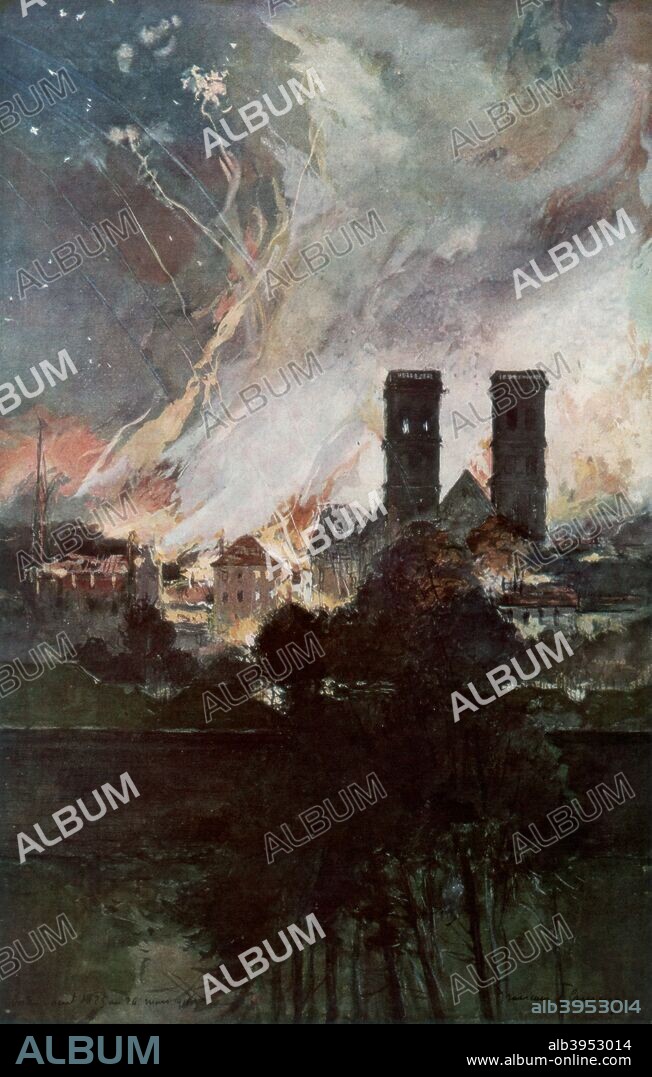alb3953014
'Bombardment of Verdun with Incendiary Shells', France, 25-26 March 1916, (1926). Artist: Francois Flameng

|
Ajouter à une autre Lightbox |
|
Ajouter à une autre Lightbox |



Avez-vous déjà un compte? S'identifier
Vous n'avez pas de compte ? S'inscrire
Acheter cette image.
Sélectionnez l'usage:

Titre:
'Bombardment of Verdun with Incendiary Shells', France, 25-26 March 1916, (1926). Artist: Francois Flameng
Légende:
Voir la traduction automatique
'Bombardment of Verdun with Incendiary Shells', France, 25-26 March 1916, (1926). The Battle of Verdun was the longest and one of the bloodiest of the First World War. The Germans began their offensive on 21 February 1916. The strategic objective of their commander, Erich von Falkenhayn was to ''bleed the French Army white by committing them to a battle of attrition in a sector of the front they would be compelled to defend at all costs. Falkenhayn's grim logic was that with a population twice that of France, Germany could afford to lose two men to every one Frenchman, thus forcing them out of the war. After early successes with the French caught by surprise and with inadequate numbers of troops and artillery, the German advance was gradually halted by desperate counter-attacks. By 11 December the Germans had retreated to their original positions. Casualties were appalling; 434,000 Germans and 550,000 on the French side.
Crédit:
Album / The Print Collector / Heritage Images
Autorisations:
Modèle: Non - Propriété: Non
Questions sur les droits?
Questions sur les droits?
Taille de l'image:
3339 x 5241 px | 50.1 MB
Taille d'impression:
28.3 x 44.4 cm | 11.1 x 17.5 in (300 dpi)
Mots clés:
ANNEES 1910 • ARCHITECTURE: CATHEDRALE • BATAILLE DE VERDUN • CATHEDRALE • CHRISTIANISME • DESTRCUTION • DESTRUCTION • DESTRUCUTION • DEVASTATION • DOM • FEU • FRONT DE L'OUEST • GRANDE GUERRE • GUERRE 14-18 • GUERRE 1914-1918 • GUERRE MONDIALE I • LORRAINE • PREMIERE GUERRE MONDIALE (1914-1918) • PREMIERE GUERRE MONDIALE • QUATRE ELEMENTS: FEU • RELIGION • RELIGION, CATHEDRALE • VERDUN
 Pinterest
Pinterest Twitter
Twitter Facebook
Facebook Copier le lien
Copier le lien Email
Email
